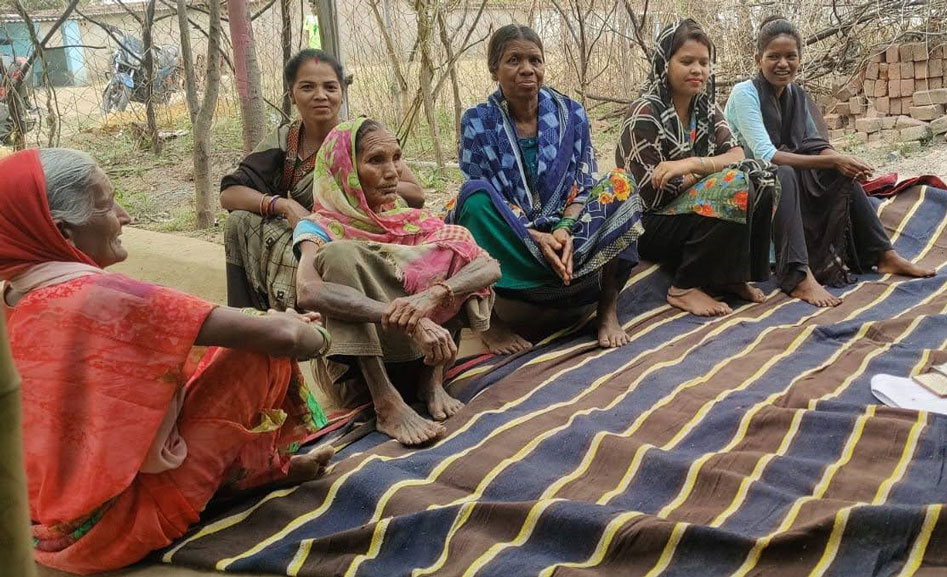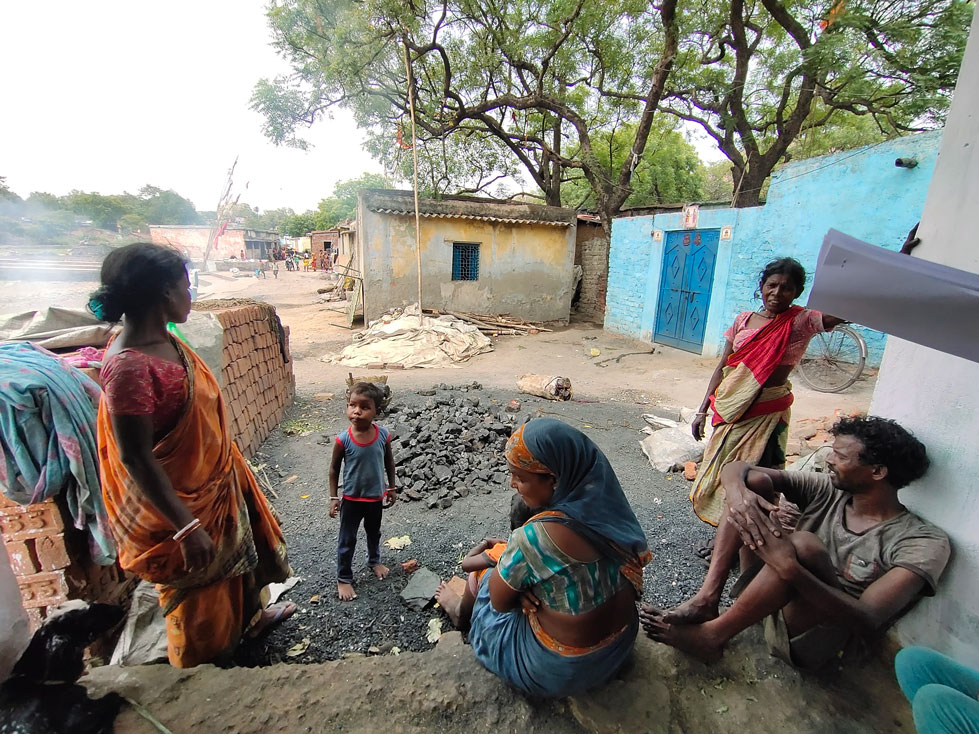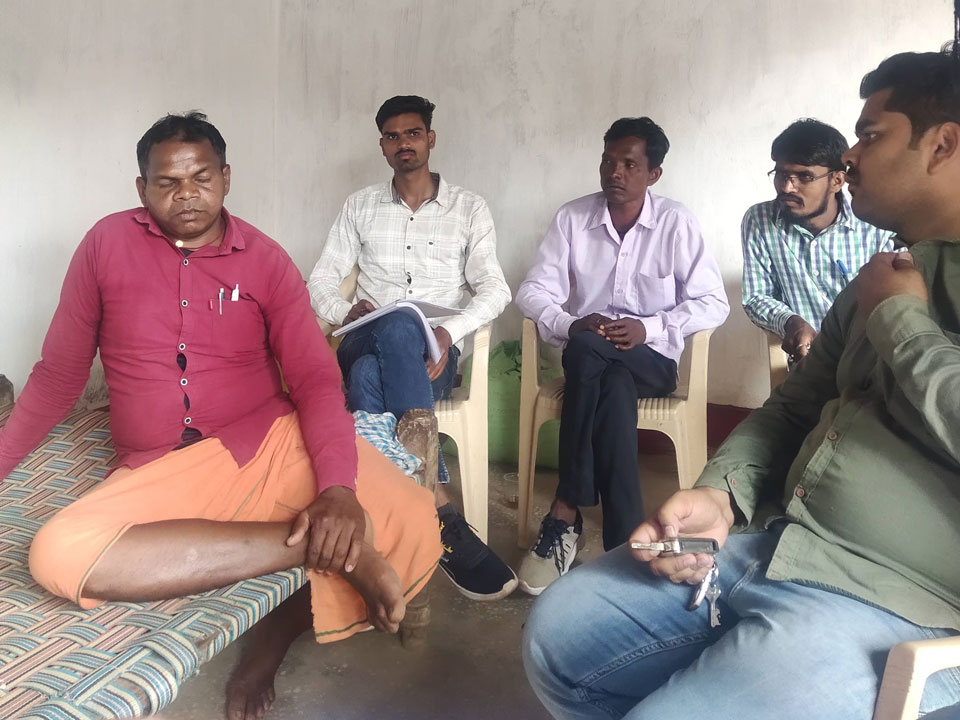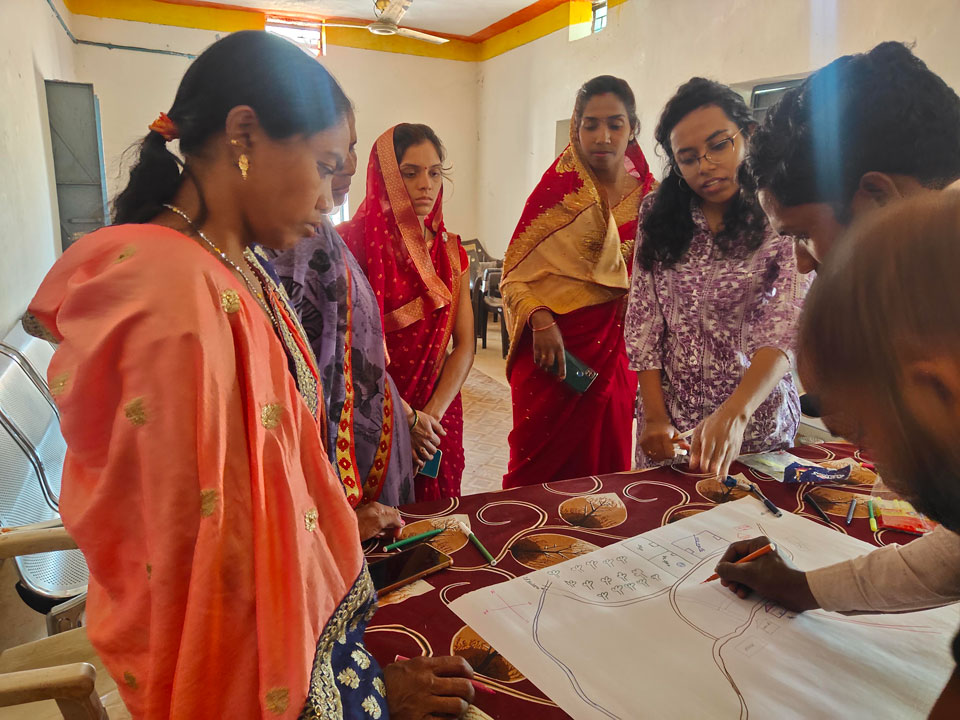WHY FACTOR IN WOMEN IN A JUST TRANSITION FRAMEWORK?
By Arpita Victor, MA Sustainable Development Practice student at TERI SAS, based on her field visits during an internship at TERI ![]()
![]()

0 Comments
Early in 2022 four women were among five people who died when a series of mines collapsed in Dhanbad,Jharkhand. They were illegally mining coal in the abandoned mines of Bharat Coking Coal and Eastern Coalfields Limited (Times of India, 2022). Jharkhand’s Jharia coalfields also see the involvement of many women in illegal coal mining under coal mafias that run in the abandoned mines. It is hard to imagine people choosing to work in conditions of bondage because they had a choice, especially women and young children (Thadani, 2022). Whether they are drawn to the pay or whether they are coerced into such conditions of labour- it should be a matter of concern for administrators and public authorities that numerous people, among them women and children work illegally in abandoned mines as bonded labour under local mafia. Even though the ban on women working in underground mines was lifted in 2019 (ANI, 2019), the official numbers do not reflect a change in the proportion of women mine workers (CIL, 2015; CIL, 2020). This means that the large numbers of women directly involved in mining activities are not accounted for in these numbers and thus the nature of
their engagement is informal and/or illegal. This nature of engagement implies a lack of social security offered alongside employment which is bound to have an adverse impact on their health and economic outcomes given the physical conditions of work are far from ideal.
Evidence from the ground in Odisha
While women being directly involved in coal related work is more common in Jharkhand, the same is not the case in other coal producing states, especially Odisha. This does not mean that women do not still get differentially impacted by coal mining. Studies in Odisha’s coal mining belt have shown that women were accustomed to maintaining kitchen gardens to supplement their families’ diets with vegetables and other such produce of choice. This would give them a way to supplement the household’s needs in kind. Having lost their land for kitchen farms in the process of displacement, these women lost their means of agency in the household, and are now dependent on their husband’s income which gives him greater say in what choices are to be made for food in the home. With the potential closure of coal mines it is most likely that the sole breadwinners of the homes will lose their income, making the women’s position domestically even more precarious, given how it is their responsibility for ensuring the nutrition needs of the household is met. Being a displaced female in the vicinity of coal mines is a significant risk factor for unfavourable life outcomes. Sundargarh in Odisha also has a high number of unmarried mothers and an increased vulnerability to such exploitation is linked to women displaced by coal mining activities in addition to having lower levels of education/literacy among local women in the area. Alcoholism is also rampant among the local male population forming a grave indicator of domestic violence and abuse. Women are also affected by coal mining in terms of livelihood not only through the loss of land based livelihoods after displacement, but also when families that do retain their land are affected by the by-products of mining activities since agriculture is more
or less the exclusive domain of women. Coal dust settling on paddy crops (which are the only crop cultivated and done so solely by women) affects the quality of the grain and prevents its sale in the market. The runoff from mines pollutes surface water sources and tanks that the locals use for bathing and washing purposes since it is common to not have running water in homes. This again impacts the fields which women routinely tend to by contaminating water with high mineral and ash content (CIRTD & CPR, 2020). Local women in Hemgir district suspect the bad water quality to be responsible for infections and putting pregnant women and unborn foetuses at risk of complications. Such risks take a higher toll on the locals than it should because they need to go all the way to Sundargarh city for proper health checkups. The groundwater levels have also fallen low due to mining activities and this again involves women because it is their responsibility to ensure there is enough water in the house for consumption (CIRTD & CPR, 2020).
Building a gender equitable future
Thus, it is imperative that any plan to move away from coal must factor in the already precarious situation of women associated with or affected by coal mining, since coal mine closure is more likely than not to worsen existing local social scenarios. While Coal India Limited plans to scale domestic coal production up by 2030 to ensure India’s self-sufficiency, this plan is going to be accompanied by the phasing out of many loss making mines (Bhushan, 2022). As 75 percent of the CIL’s profits come from 35 large mines (Bhushan, 2022), the PSU is likely to phase out the others or auction them to private bidders. To give an idea of the severity of the situation for coal labour, 40 percent of labour is engaged in the remaining mines that are loss making (ibid.) and thus most likely to cease operations putting entire communities out of employment. The threat to coal dependent communities and by extension, women and children is imminent and needs to be addressed on a priority basis. This will involve measures like a prioritisation of healthcare schemes in mining areas in addition to a strengthening of the Pradhan Mantri Khanij Kalyan Yojana through a robust use of District Mineral Funds. Field experience in Hemgir showed that rural women were eager to learn and skill themselves. They had SHGs but they lacked the knowledge to leveraging the platform to initiate entrepreneurial activities. Intervention before it is too late in terms of families getting displaced again or before coal mines close is crucial to enable local women to gain a say in their means of income and agency in the house and community.
References
- ANI. (2019, February 4). Now, women allowed to work in underground mines. Business Standard. Retrieved September 12, 2022, from https://www.businessstandard.com/article/news-ani/now-women-allowedto-work-in-underground-mines-119020400714_1.html
- Bhushan, C. (2022, April 28). Coal consumption in India: We are already late on fair green transition. The Financial Express. Retrieved September 12, 2022, from https://www.financialexpress.com/opinion/thereal-mainstream-we-are-already-late-on-fair-greentransition/2505806/
- Chadha, R., & Kapoor, I. (2022, January 10). District Mineral Foundation Funds: Evaluating the Performance. Centre for Social and Economic Progress. Retrieved September 12, 2022, from https://csep.org/wp-content/uploads/2022/01/District-MineralFoundation-Funds-Evaluating-the-Performance.pdf
- CIL. (2015). ANNUAL REPORT. Ministry of Coal. Retrieved September 12, 2022, from https://coal.gov.in/sites/default/files/2019-11/chap14AnnualReport1415en.pdf
- CIL. (2020). EMPOWERMENT OF WOMEN. Ministry of Coal. Retrieved September 12, 2022, from https://coal.gov.in/sites/default/files/2020-09/Chapter14-en.pdf
- CIRTD & CPR. (2020). Closing the enforcement gap: Groundtruthing of environmental violations in Sundargarh, Odisha. Centre for Policy Research. Retrieved September 12, 2022, from https://cprindia.org/wp-content/uploads/2021/12/SundargarhReport-for-Web-Version-Final-Revised.pdf
- Dhaatri. (2016). Home. OHCHR. Retrieved September 12, 2022, from https://www.google.com/l?sa=t&rct=j&q=&esrc=s&source=web&cd=&cad=rja&uact=8&ved=2ahUKEwjlnvysgvz5AhWTF7cAHeirDgwQF noECAMQAw&url=https%3A%2F%2Fwww.ohchr.org%2Fsites%2Fdefault%2Ffiles%2FDocuments%2FHRBodies%2FCRC%2FDiscussions%2F2016%2FDhaatri.docx&usg=AOv
- Nayak, S. (2020, May 16). Dispossessed Women’s Work : The Case of Talcher Coalfields of Odisha. Economic and Political Weekly |. Retrieved September 12, 2022,from https://www.epw.in/journal/2020/20/reviewwomens-studies/dispossessed-womens-work.html
- Thadani, A. (2022, June 14). In Photos: Mafias, a Ruthless Appetite for Coal and the Bonded Mine Workers of Jharia. The Wire. Retrieved September 12, 2022, from https://thewire.in/labour/in-photosmafias-a-ruthless-appetite-for-coal-and-the-bondedmine-workers-of-jharia
- Times of India. (2022, February 1). Jharkhand: 4 women among 5 coal-pickers dead as 3 abandoned mines collapse during illegal mining | Ranchi News. Times of India. Retrieved September 12, 2022, from https://timesofindia.indiatimes.com/city/ranchi/many-feared-trapped-as-3-abandoned-coal-minescollapse-in-jharkhand-during-illegal-mining/articleshow/89275169.cms





